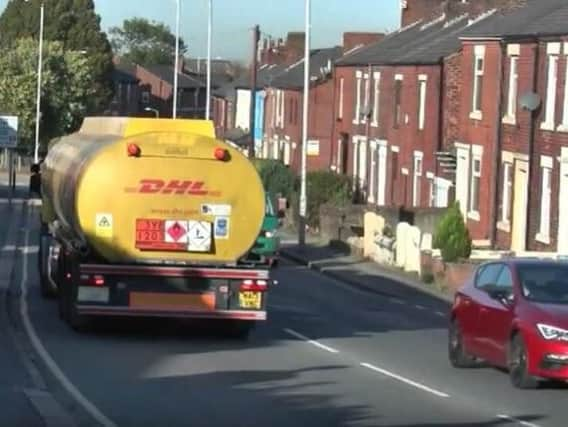Fresh row over air quality in South Ribble


Twenty-three out of twenty-seven monitoring stations showed a fall in levels of one of the main pollutants, nitrogen dioxide, between 2016 and 2017, the latest year for which figures are available.
Advertisement
Hide AdAdvertisement
Hide AdBut opposition councillors and members of the public said that the statistics were out of date and the most dangerous substances were going unmeasured.
South Ribble has five air quality management areas (AQMAs) – zones in which nitrogen dioxide has previously exceeded recommended maximum levels.
Four locations – in Lostock Hall, Bamber Bridge, Penwortham and Walton-le-Dale – were identified as areas of concern back in 2005. A fifth – Turpin Green Lane in Leyland – was added in 2017.
Data shows that most monitoring sites within the AQMAs recorded falls in nitrogen dioxide in 2017, with the exceptions being a stretch of Turpin Green Lane and also Watkin Lane and Brownedge Road in Lostock Hall – the latter is now the only part of the borough known to be breaching nitrogen dioxide limits.
Advertisement
Hide AdAdvertisement
Hide AdHowever, there was barely-concealed fury from residents at a meeting of Conservative-run authority’s cabinet, where the figures were presented.
Raymond McCall, who has lived on Turpin Green Lane for 50 years, said HGVs were still “hammering” the road en route to junction 28 of the M6. There have long been calls for weight restrictions to be added to the road in order to force the most polluting vehicles to access the motorway one junction further north.
Cabinet member for public health, Karen Walton, said the authority was lobbying Lancashire County Council – which is responsible for roads – to ensure South Ribble’s air quality was “a top priority”.
“We have written to companies asking them to redirect their vehicles and also keep highlighting it to the county council [in the hope] that they will add weight restrictions,” Cllr Walton said.
Advertisement
Hide AdAdvertisement
Hide AdBut Graham Eastham, who is campaigning against the proposed development of 2,000 homes at Pickerings Farm, said that the council should be monitoring particulate matter – a mixture of solid and liquid air pollutants – as well as nitrogen dioxide.
“You measure nitrogen dioxide because it’s cheap – but it’s a blunt measure, averaged over a month and doesn’t detect peaks and troughs. By your own admission, particulate matter is the biggest [air quality-related] killer,” Mr. Eastham said.
The meeting heard that the council is told by government which pollutants to monitor. When councils were ordered by Whitehall by to draw up air quality action plans last year, the focus was placed on nitrogen dioxide levels and cabinet member for assets, Colin Clarke, said they “correlate” with particulate matter.
Labour opposition leader, Paul Foster, condemned the cabinet report as “blatant electioneering to reassure the public”.
Advertisement
Hide AdAdvertisement
Hide Ad“Public Health England have said air quality is the single biggest environmental risk to public health in the UK – except, it seems, in South Ribble.
“This data is over two years old and we’ve seen historically that when there is a small dip [in pollution], there is a large increase shortly afterwards,” Cllr Foster said.
Members were told that measurements for 2018 could not be released until they were verified later this year.
Deputy council leader, Caroline Moon, said she understood the public’s frustration, but added that the authority was “not complacent in terms of changing the things we can change”.
The borough’s air quality action plan, published late last year, included plans to improve electric vehicle charging opportunities and the creation of walk-to-school routes for children.